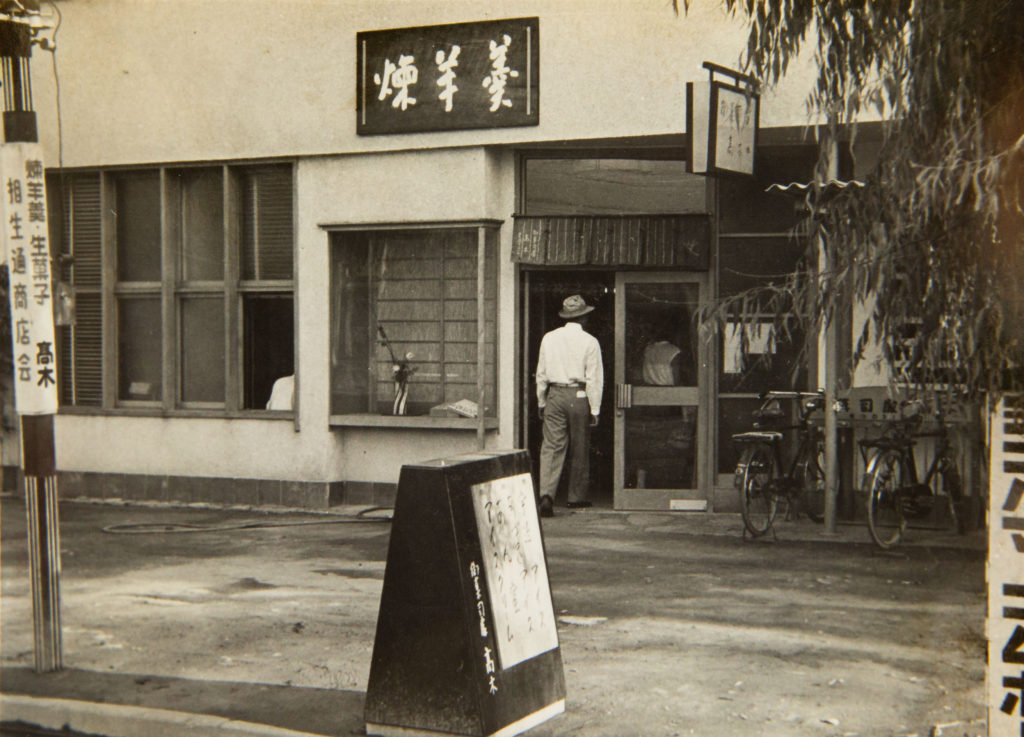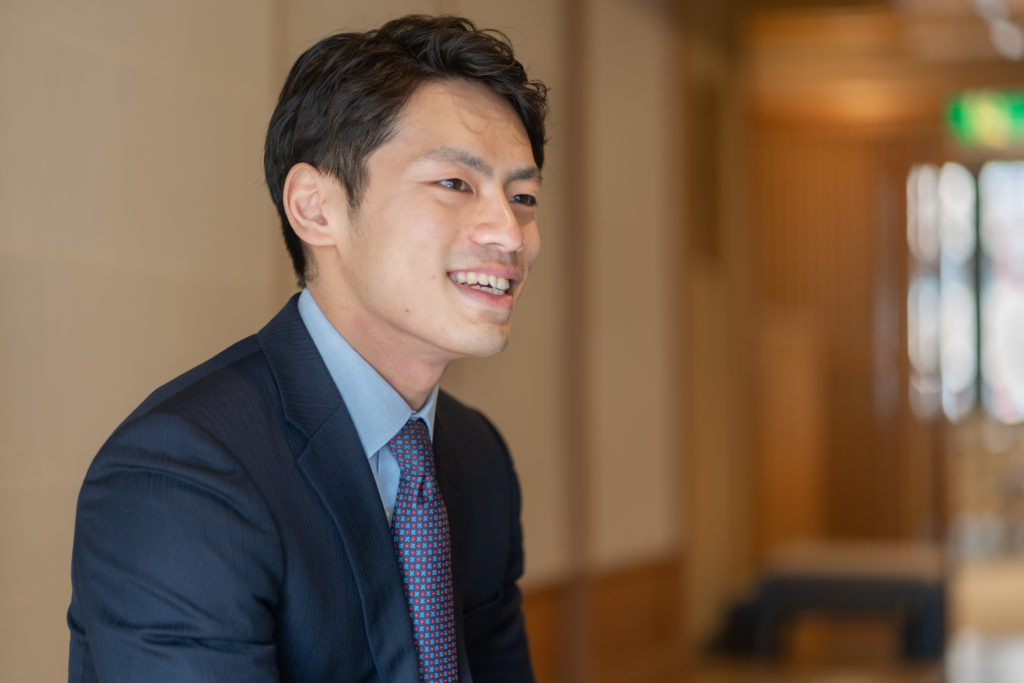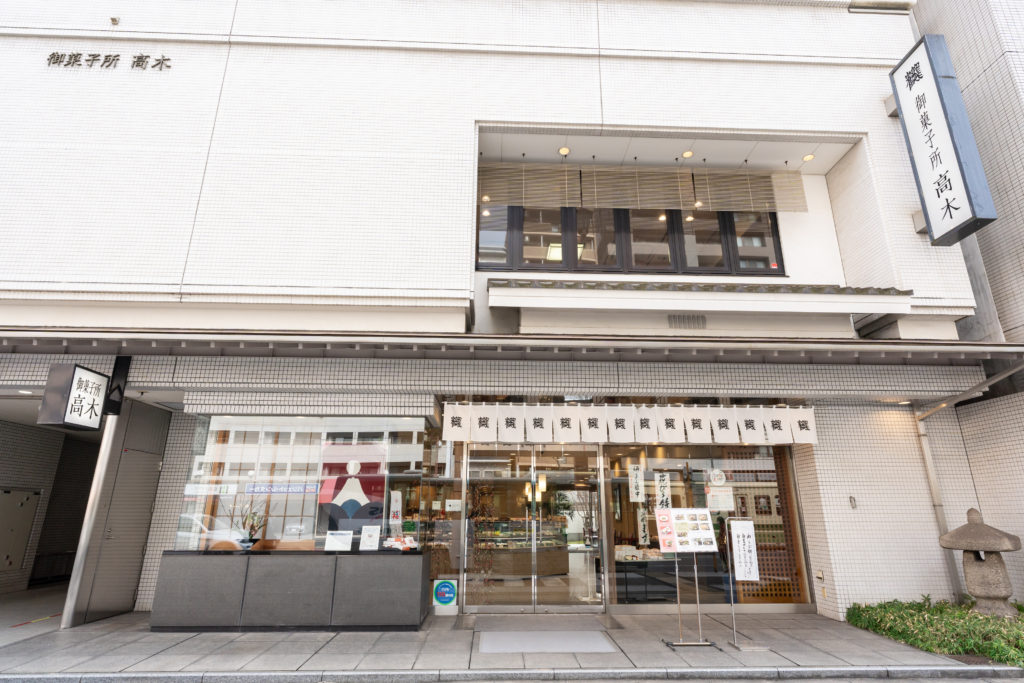Long-Established Companies and War, Okashidokoro Takaki

Okashidokoro Takaki, a confectionery store, was established in 1919. Although the confectionery was devastated during WWII, it reopened postwar and has spent over a century as part of the city of Hiroshima. We interviewed the head of the planning department Mr. KATO Keisuke.

Pictured circa 1951, Okashidokoro Takaki reopened shortly after WWII.

The founder TAKAKI Matsujirō who perished in the atomic bombing of Hiroshima
Okashidokoro Takaki was founded by TAKAKI Matsujirō in Sakan-Chō (presently, Tōkaichi-Machi, Naka-Ku, Hiroshima-city) as a traditional Japanese teahouse that offered sweet porridges made from adzuki beans such as shiruko (smooth adzuki-beans soup) and zenzai (mashed adzuki-beans soup). At that time, the shop was staffed by his nephew and successor KAMIYA Akio.
The founder perished on August 6, 1945 in the atomic bombing of Hiroshima, and KAMIYA Akio reopened the shop in 1947 after he returned from the war. He started anew in war-ravaged Hiroshima by relying solely on the confectionery arts that he studied before the war such as candy-making. Naturally, sugar was difficult to come by following the war. I heard that he even relied on the black market at times. Nevertheless, he was a stickler for making confections with quality ingredients that used real sugar, rejecting cheap substitutes like sweeteners that were so commonplace. Judging from photos of the time, the shop could already sell traditional Japanese confections such as namagashi (wet confectionery) and yōkan (sweet jellied adzuki‐bean paste), and the customers were bustling about inside. It seems Okashidokoro Takaki was widely recognized for having the best traditional Japanese confections in Hiroshima, such as the time it had the honor of offering namagashi to the Emperor and Empress Shōwa in 1951 not long after reopening.

Tsuru Kame (Crane & Tortoise) Monaka, well known even today as the iconic confection of Okashidokoro Takaki. Pictured on the right is a box from 1970.

Mr. KAMIYA Akio, the second proprietor who succeeded the founder when he reopened Okashidokoro Takaki after the war and handled product development of Tsuru Kame Monaka.
Okashidokoro Takaki’s flagship product has to be Tsuru Kame (Crane & Tortoise) Monaka (Japanese wafer). It was created around 1955, but continues to be our most popular product. The motif of a crane and tortoise, which are both symbolic of good fortune, was chosen in the hope of a return to prosperity after the atomic bombing. The product was created with the sentiment that we would like the people of Hiroshima to partake of something delightful, especially because those times were so trying for everyone. KAMIYA Akio also designed the logo on our shop curtain and paper bags where the Chinese character for tortoise appears between the two parts that make up the character for crane, and that remains unchanged.

Mr. KATO Keisuke, the head of the planning department, proactively uses social networking to introduce younger generations to the appeal of traditional Japanese confections. His father Mr. KATO Hiroki serves as the fourth president.
To celebrate our centennial, we held a confectionery class for children in 2019 as one of our memorial events. In this age where so many things come and go, we wished that children, too, would know about our long-held traditions and how there are traditional Japanese confections for each season. What stands out in my memory is how children who were making traditional Japanese confections for the first time took it seriously while also having fun.
We pride ourselves in selling not only traditional Japanese confections but Japanese culture as well. In order to pass on our precious culture to the next generation, we must continue posting more information online so young people, too, will understand the appeal of traditional Japanese confections. Also, in addition to preserving tradition, we would like to continue offering confections that reflect the times.
With times such as they are, I believe there are some things an old-fashioned Japanese confectionery must change. However, the one thing we must never change is the conviction that the locals who live in Hiroshima will remain our most important customers. Since they have looked after us in this city for more than a century, I would like for us to be of some help to the people of Hiroshima by having them eat our traditional Japanese confections and feel at ease, perhaps smiling and feeling relieved.
Company Profile

Okashidokoro Takaki
Established in 1919, Okashidokoro Takaki has eleven locations in Hiroshima Prefecture. In 2013, the original location Tōkaichi Honten was awarded for the second time in the Hiroshima Chamber of Commerce and Industry’s spotlight “Good Shops in Hiroshima.” In 2016, its confection Hiroshima Lemon Sweets won by popular vote in the contest “New Hiroshima Souvenir Grand Prix” sponsored by the Chugoku Shimbun Co. Also, its iconic confection Tsuru Kame Monaka is the choice of tea rooms in Hiroshima.
(Tōkaichi Honten)
Phone: +81 (0)82-231-2121
Address: 1-4-26 Tōkaichi-Machi, Naka-Ku, Hiroshima-city
Hours: 9:00-18:00 (The teahouse corner operates 10:00-17:00; last order at 16:30.)
Access: 3 min. walk from Tokaichi-machi Station, Hiroshima Electric Railway.
Website: https://www.okashidokoro-takaki.com
Instagram: https://www.instagram.com/okashidokorotakaki.info/
Facebook: https://www.facebook.com/OkashidokoroTakaki.info/
Twitter: https://twitter.com/takaki_info
Peace Learning
Learn about Hiroshima’s reconstruction experience
People in Hiroshima restarted their lives from ruins due to the atomic bombing.
Learn about Hiroshima’s reconstruction experienceLearn about the efforts of Hiroshima Prefecture companies
Efforts of companies in the prefecture to contribute to the United Nations Sustainable Development Goals are introduced.
Learn about the efforts of Hiroshima Prefecture companiesTags associated with this article




![[Interview] The Importance of Information in Peace and the Role of Information Companies [Interview] The Importance of Information in Peace and the Role of Information Companies](https://hiroshimaforpeace.com/en/wp-content/uploads/sites/2/2023/09/瀬尾様_プロフ.00-1-150x150.png)


